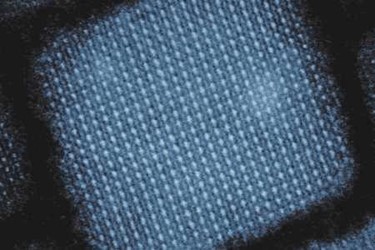Extremely Bright And Fast Light Emission

A type of quantum dots that has been intensively studied in recent years can reproduce light in all colors and is very bright. An international research team with the participation of scientists from ETH Zurich has now discovered why this is so. The quantum dots could one day be used in light emitting diodes.
An international team of scientists from ETH Zurich, IBM Research Zurich, Empa and four US research institutes has come up with an explanation for why a class of nanocrystals that has been intensively studied in recent years shines in such incredibly bright colors. The nanocrystals are those of cesium-lead-halide compounds, which are arranged in a so-called perovskite lattice structure.
Three years ago, Maksym Kovalenko, professor at ETH Zurich and Empa, succeeded in producing nanocrystals - or quantum dots, as they are called - from this semiconductor material. "These tiny crystals turned out to be extremely bright and fast emitting light sources, brighter and faster than any other kind of quantum dots studied so far," says Kovalenko. By varying the composition of the chemical elements and the nanoparticle size, he also succeeded in producing different nanocrystals that glow in the colors of the entire visible spectrum. These quantum dots are therefore also traded as components of future LEDs and screens.
In a recent issue of the journal Nature published study, the international research team now examined these nanocrystals individually and in great detail. The scientists were able to confirm that the nanocrystals emit light extremely fast. Quantum dots previously studied typically emit light at room temperature about 20 nanoseconds after they are excited. That's already very fast. "Cesium-lead halide quantum dots, on the other hand, emit light at room temperature after just one nanosecond," explains Michael Becker, the lead author of the study. He is a doctoral student at ETH Zurich and is a PhD student at IBM Research.
Electron-hole pair in excited state
To understand why the cesium-lead-halide quantum dots are not only fast but also very bright, you have to delve into the world of the individual atoms, photons and electrons: "Semiconductor nanocrystals can be used with a photon suggest that an electron leave its original place in the crystal lattice and leave a gap there, "explains David Norris, professor of materials engineering at ETH Zurich. The result is an electron-hole pair that is in an excited energy state. If the electron-hole pair falls back into its energetic ground state, light is emitted.
Under certain conditions, different states of excited energy are possible, in many materials the most likely of which is called a
Not in the dark state
As the researchers have now shown, the cesium-lead-halide quantum dots differ from other quantum dots: For the cesium-lead-halide quantum dots, the most likely excited energy state is not a dark state. Rather, excited electron-hole pairs are in a state from which they can emit light immediately. "That's why they shine so bright," says Norris.
The researchers came to this conclusion on the basis of their new experimental data and theoretical considerations, led by Alexander Efros, a theoretical physicist at the Naval Research Laboratory in Washington. He is a pioneer in quantum dot research and, together with other scientists, discovered 35 years ago how traditional semiconductor nanocrystals work.
Excellent for data transfer
Because the cesium-lead halide quantum dots studied are not only bright but also inexpensive to produce, they are suitable for use in screens. Several companies, both in Switzerland and worldwide, are doing development work in this area. "Because the quantum dots can emit photons very quickly, they are also of interest for optical data communication within data centers and supercomputers. Fast, small and efficient components are particularly important there, "says Mahrt. Another future application would be the optical simulation of quantum systems, which is important in basic science and materials science.
Finally, ETH Zurich professor Norris is interested in using the new knowledge for the development of new materials. "Now that we understand why these quantum dots are so bright, we can also think about developing other materials with similar or even better properties," he says.
Source: ETH Zurich
